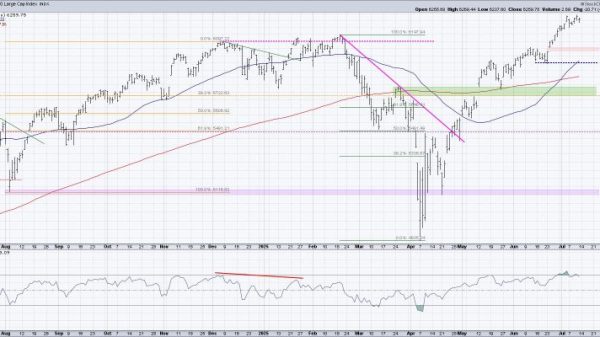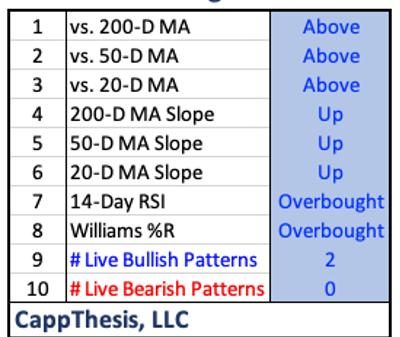“Look, folks, you know how many billionaires we have in America today? One thousand. You know what their average rate — tax rate — federal tax rate is? Federal tax rate is 8.5 percent. Raise your hand if you’d trade your tax rate for 8.5 percent. I’m serious. Think about this. There’d be $40 billion raised if they even pay 25 percent.”
— President Biden, remarks in Raleigh, N.C., Jan. 18
There are some “facts” that Biden likes to recite in almost every speech. In the past year, in more than 30 appearances, the president has referred to billionaires paying about 8 percent in federal income taxes. He said it in his last State of the Union address, and odds are he will say it again when he addresses Congress in March.
The line is a key part of his argument to impose a minimum 25 percent tax on all taxpayers with wealth greater than $100 million. That would raise about $360 billion over 10 years, the administration estimates.
But if you check Treasury Department calculations for what the richest Americans already pay in taxes, you would see that the richest 1 percent pay in excess of 20 percent in income taxes and more than 30 percent in all federal taxes. Even if you drill down to the top 400 wealthiest taxpayers — data that was publicly available on an annual basis until President Donald Trump killed the report — they paid an effective tax rate of 23.1 percent in 2014. These taxpayers — with $127 billion of income — that year paid $29.4 billion in income taxes, or more than 2 percent of all income taxes, the IRS said. That’s more than the bottom 70 percent of taxpayers combined.
Here’s the funny thing: Biden’s 8 percent estimate is derived from that same tax data on the top 400 taxpayers. So what’s going on? The president is describing a tax system that he wished existed — not the system in place.
Under the 16th Amendment of the Constitution, ratified in 1913, “Congress shall have power to lay and collect taxes on incomes, from whatever source derived.” Biden’s startling statistic depends on an expansive definition of income.
A person’s effective tax rate is determined by the percentage of their income that is devoted to paying taxes. If a person earned $50,000 a year and paid $5,000 in taxes, then their average tax rate would be 10 percent.
But what is a person’s income? Many economists would say it is more than just the numbers on your paycheck. Your employer pays half of the Social Security payments that are due and might also include health insurance benefits and contributions to a 401(k) retirement plan. Most economists would say your salary is reduced by the value of those contributions, so it should be counted as part of income.
Indeed, when the Treasury Department determines average tax rates, it includes such items (and other income streams, such as welfare payments) in its calculations.
So let’s assume in our example of the $50,000-a-year salary that those additional employer benefits added $15,000 to that person’s income, for a total of $65,000. That would reduce the effective tax rate to 7.6 percent.
In the 1920s and 1930s, two economists, Robert Haig and Henry Simons, proposed a broad definition of income that included any gain in asset value, whether the assets were sold. The idea was to capture a person’s economic well-being. Under the current tax system, a person generally pays a capital-gains tax (20 percent) when they sell an asset, such as shares in a company, that has gained in value. But under Haig-Simons, any gain in asset value during a year would be a taxable event.
Suppose our taxpayer earning $65,000 in salary and benefits lives in a house that rose in value $35,000 in one year. Under Haig-Simons, the person’s income would be $100,000, even though the house had not been sold. If they paid $5,000 in taxes, their tax rate would be only 5 percent. So, just by fiddling with the income figures, we have cut the tax rate in half.
This brings us to Biden’s statistic. In 2021, two White House economists — Greg Leiserson of the Council of Economic Advisers and Danny Yagan of the Office of Management and Budget — published a blog post that estimated what the tax rate would be for the 400 wealthiest households if unrealized capital gains were considered part of income — a modified version of Haig-Simons. The report estimated that these households had an average federal individual income tax rate of 8.2 percent for the 2010-2018 period.
The steep run-up in stock prices in recent years has meant the wealth of super-wealthy Americans has risen significantly, even if they never sell stock that would trigger a tax liability. In fact, when interest rates were low, it was more cost-effective for a billionaire to borrow money against the value of those shares than sell them. The White House economists estimated what the tax rate would be if that income — now not subject to taxation — were included on their tax returns.
White House officials told The Fact Checker that this concept is no different from what the Treasury Department or the Congressional Budget Office do when they include other income streams, such as health insurance and retirement benefits, in their estimates of effective tax rates. Previously, the officials said, there had not been a way to measure unrealized capital gains.
As is often the case in economic studies, there are limitations in the figure — caveats that get lost in the presidential retelling. The blog post did not consider the impact of inflation on unrealized gains; inflation reduces the value of capital gains and thus overall income, though it’s not considered for tax purposes. The blog post also did not include the impact of estate taxes, which are designed to recapture some unrealized gains at death. Nor did it include corporate income taxes — often paid by the wealthy. All of these items would raise the effective tax rate paid by billionaires from the 8 percent cited by Biden.
In a paper published in the peer-reviewed Oxford Review of Economic Policy in August, Yagan, now at the University of California at Berkeley, updated the estimates to conclude that the top 400 households paid an average tax rate of 9.6 percent in the 1992-2020 period — and 12 percent in inflation-adjusted terms. The real average tax rate ranged from a low of 5.2 percent in 1999 (after a phenomenal bull market) to a high of 32.6 percent in 1992 (during a recession). He also said the effective corporate tax rate could be 29 percent for these households, though he did not study the issue in detail. (Corporations also have ways to greatly reduce taxes.)
Alan D. Viard, a senior fellow emeritus at the American Enterprise Institute, said that “unrealized income is income” but that ideally discussion of inflation “should have been included in the blog post and/or President Biden should cite the numbers from the article rather than those from the blog post.”
Laying aside the accuracy of the estimate, the other issue is that Biden frequently suggests he is describing the current tax system. We reviewed his comments over the past year, and he usually compares the 8 percent tax rate for billionaires with effective tax rates paid by police officers and firefighters. The implication often is that he is describing the current system — which some experts said is misleading.
“It’s disingenuous, at best, to tout an eight percent figure without explaining how it’s calculated, and acknowledging that it is based on an aspirational definition of gross income that isn’t currently in effect,” said Robert Willens, a leading tax and accounting expert. “Further, he risks even more opprobrium being heaped on wealthy taxpayers who are, based on widely cited statistics, paying a very large proportion of the aggregate income taxes the IRS collects each year.”
Chris Edwards of the Cato Institute, who has written extensively on this issue, noted that “no other OECD country today has a general tax on unrealized gains, and the U.S. never has.” The effective tax rates from official bodies such as Treasury “all show that rates at the top end are much higher than at the middle and bottom end. That undermines the Biden narrative, so they’ve invented their own statistic.”
Viard was more sympathetic, saying Biden “is highlighting the consequences of the fact that they are not currently taxable.”
“The tax system omits a variety of forms of income that — on balance — favor wealthy people,” said William Gale of the Brookings Institution. “The problem is the tax code — not the statistic.”
“Most Americans agree that when a billionaire’s wealth increases by millions of dollars in a year, that is income,” said White House spokesperson Michael Kikukawa. “And economists across the political spectrum, including the American Enterprise Institute and the nonpartisan congressional Joint Committee on Taxation, agree that a person’s income is equal to the change in their net worth. By quantifying the income that the wealthiest Americans receive from unrealized capital gains, the CEA-OMB analysis applies this standard definition of effective tax rates, adding to our understanding of just how low billionaires’ tax rates are.”
Biden is careful to note he is speaking about federal income taxes, yet he is being too facile with this statistic. With proper framing, he could educate his listeners about how the super-wealthy can escape taxation under the current system — and then make a pitch for his billionaire tax. There’s some value in highlighting how not all income obtained by the wealthy is currently subject to taxation. But he shouldn’t suggest that billionaires already are paying such a low percentage of their income on taxes when numerous reports by the Treasury Department, the Congressional Budget Office and other agencies show they pay a much higher effective tax rate under the current tax system.
Moreover, the president should update his spiel by using the figures in Yagan’s article — which suggests that the billionaire tax rate with unrealized gains, while low, is not as low as the president keeps claiming.
(About our rating scale)
Send us facts to check by filling out this form
Sign up for The Fact Checker weekly newsletter
The Fact Checker is a verified signatory to the International Fact-Checking Network code of principles





























